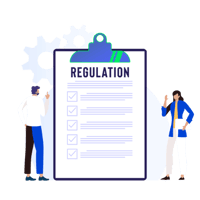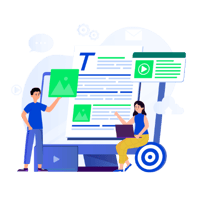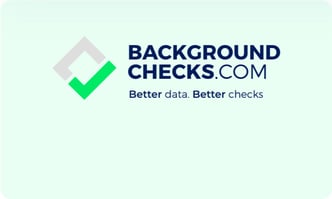Understanding How AI Developments Impact the Employer Background Check and Hiring
"Artificial intelligence" is the topic of the day in almost every industry as businesses scramble to determine how to use these new technologies. With President Biden's release of an executive order about regulating and pursuing AI innovations, the pace of change will surely accelerate even further. However, AI has already had an impact at a more fundamental level—the hiring stage. What does AI mean for hiring processes, the employer background check, and more?
Where do companies use AI in hiring?
Answering that question would take a book or three. However, we can narrow our focus to Automated Employment Decision Tools (AEDTs) and other AI tools used to help select candidates today. Through that lens, we can examine recent developments in this space.
AI adoption has been slow in many spaces due to uncertainty and concerns about backlash. Other companies may use AEDTs quietly, rarely advertising that they do so. These tools have many basic uses. For example, an employer might define a set of criteria for experience and credentials and use an AEDT to filter out resumes that don't meet expectations.
At a higher level, some companies may use these tools to provide "scores" or judge whether to hire an individual or promote them. Some companies have even used AI tools to analyze a candidate's facial expression and body language in video interviews to help determine suitability. The use of AI to check a criminal record remains a legal gray area.
The federal government takes note
It takes time to develop regulations at the federal level. There are concerns about the government moving too slowly to keep up with the pace of innovation. In response to such concerns, numerous federal government agencies have issued statements or preliminary guidance on AEDTs. We can summarize these actions in three ways:
- First, the government confirms that AI tools must abide by all existing employment and fairness laws.
- Second, the government recognizes that AI can potentially inflict great harm on hiring fairness.
- Third, the government commits to continue litigating to support individual rights against AI tools.
At the heart of the concerns surrounding AEDTs is "algorithmic bias." This concern is also central to initial EEOC guidance on AI in the workplace.
The EEOC continues formulating guidance
AI tools don't appear out of nowhere; human developers create the algorithms and supply the training data to make them function. This process may introduce human biases into the algorithms intentionally or unintentionally. Over time, without frequent correction and improved training, models may drift towards discriminatory outcomes, too. Reining in and controlling this algorithmic bias is a significant concern for the EEOC.
In that context, the EEOC continues to formulate and release essential guidance on these tools. The government clarifies that it is an employer's responsibility to ensure the company audits AI tools for algorithmic bias and takes steps to mitigate such bias. Relying on technology that makes biased decisions leaves employers liable for discrimination. Likewise, the EEOC has also recommended using AI in the context of the Americans With Disabilities Act. More regulations may arise as AI creeps into other areas, such as housing and rentals.
Avoiding bias and embracing fair hiring
Because of concerns with the Fair Credit Reporting Act and potential discrimination, AI's entrance into the criminal record check arena has been slow. However, advances in this space will likely occur sooner rather than later. For now, it is important to know that algorithmic biases are hard to eliminate and could pose a considerable risk to your business.
For speed and reliability, an instant background check from a trusted provider such as backgroundchecks.com offers a more direct route to your goal. With more than 650 million records professionally compiled and maintained from state and local sources nationwide, you can quickly obtain a report and analyze it yourself—no AI necessary. Additional services, including employment verification, provide reviewable and actionable information.
Choosing the right path forward
Some companies choose not to use AI tools, relying on traditional processes to continue identifying and selecting talent. Others embrace automation without AI in the form of applicant tracking systems. Still, others believe that taking these decisions out of human hands might be the best choice—though whether that turns out to be true in the long run remains to be seen. Nonetheless, AEDTs are here to stay in some form or another.
It's impossible to say what future regulations will be, just the same as it's hard to predict whether future tools will try to automate elements of the employer background check process. Each business must evaluate its needs individually while considering current and future restrictions. Ultimately, it's worth remembering that AI systems are still far from perfect and using them requires caution.
Get monthly updates on Background Checks for Employers

About Michael Klazema The author
Michael Klazema is the lead author and editor for Dallas-based backgroundchecks.com with a focus on human resource and employment screening developments








